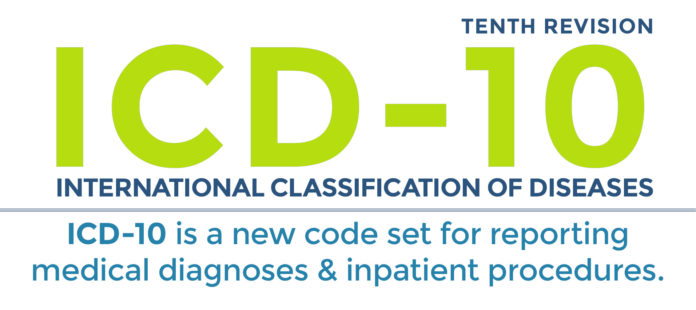The National Center for Health Statistics (NCHS), the Federal agency responsible for use of the International Statistical Classification of Diseases and Related Health Problems, 10th revision (ICD-10) in the United States, has developed a clinical modification of the classification for morbidity purposes. The ICD-10 is used to code and classify mortality data from death certificates, having replaced ICD-9 for this purpose as of January 1, 1999. ICD-10-CM is the replacement for ICD-9-CM, volumes 1 and 2, effective October 1, 2015.
The ICD-10 is copyrighted by the World Health Organization (WHO), which owns and publishes the classification. WHO has authorized the development of an adaptation of ICD-10 for use in the United States for U.S. government purposes. As agreed, all modifications to the ICD-10 must conform to WHO conventions for the ICD. ICD-10-CM was developed following a thorough evaluation by a Technical Advisory Panel and extensive additional consultation with physician groups, clinical coders, and others to assure clinical accuracy and utility.
The entire draft of the Tabular List of ICD-10-CM, and the preliminary crosswalk between ICD-9-CM and ICD-10-CM were made available on the NCHS website for public comment. The public comment period ran from December 1997 through February 1998. The American Hospital Association and the American Health Information Management Association conducted a field test for ICD-10-CM in the summer of 2003, report [PDF – 1.8 MB]. All comments and suggestions from the open comment period and the field test were reviewed, and additional modifications to ICD-10-CM were made based on these comments and suggestions. Additionally, new concepts have been added to ICD-10-CM based on the established update process for ICD-9-CM (the ICD-9-CM Coordination and Maintenance Committee) and the World Health Organization’s ICD-10 (the Update and Revision Committee). This represents ICD-9-CM modifications from 2003-2011 and ICD-10 modifications from 2002-2010.
The clinical modification represents a significant improvement over ICD-9-CM and ICD-10. Specific improvements include: the addition of information relevant to ambulatory and managed care encounters; expanded injury codes; the creation of combination diagnosis/symptom codes to reduce the number of codes needed to fully describe a condition; the addition of sixth and seventh characters; incorporation of common 4th and 5th digit subclassifications; laterality; and greater specificity in code assignment. The new structure will allow further expansion than was possible with ICD-9-CM.
Please feel free to contact the e-mail address listed below with any questions you may have:
E-mail: nchsicd10cm@cdc.gov
The procedure coding system, ICD-10-PCS, developed and approved as a replacement for ICD-9-CM, Volume 3, can be viewed and downloaded from the Centers for Medicare and Medicaid Services’ Web site.
We very much appreciate your interest in ICD-10-CM.
Source : https://www.cdc.gov/nchs/icd/icd10cm.htm



















